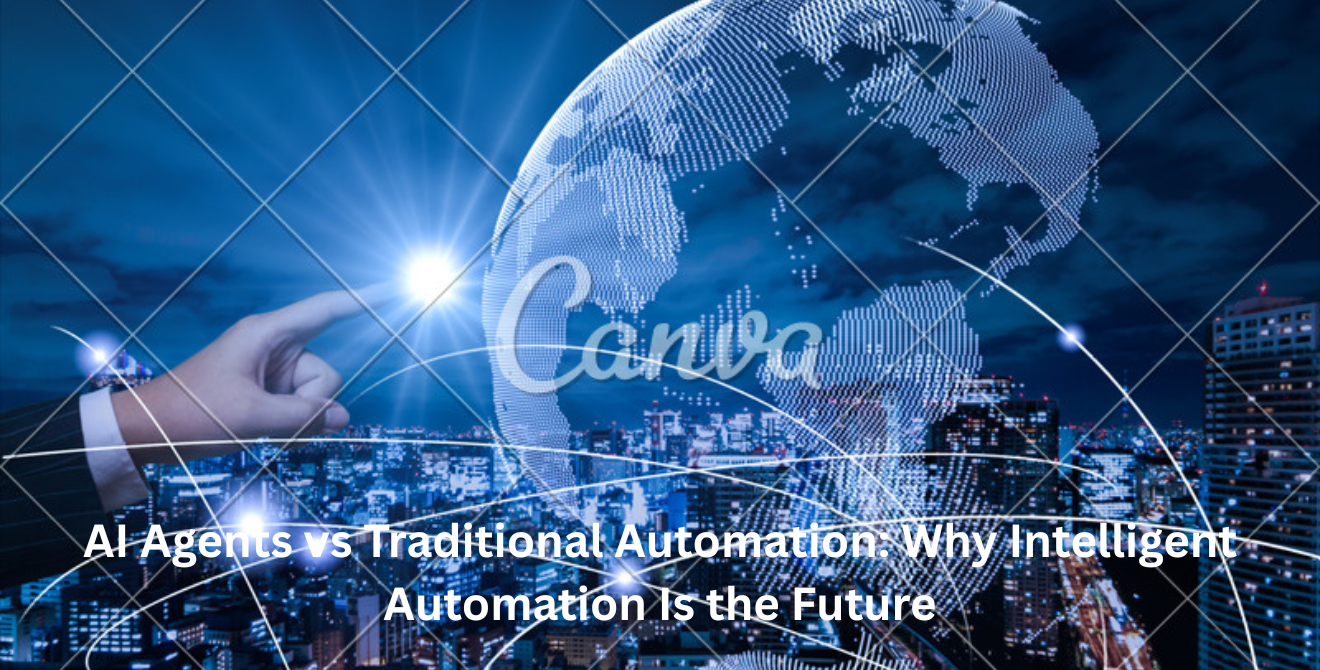The way we automate work is undergoing a seismic shift. For years, Robotic Process Automation (RPA) has been the go-to solution for handling repetitive, rule-based tasks. But in 2025, a new player is stepping in — AI agents. These smart, semi-autonomous systems go beyond following scripts — they think, adapt, and even learn on the fly.
So what exactly are AI agents, and how are they different from traditional automation? More importantly, what does this shift mean for your business, your tech stack, and your workforce?
Let’s dive into this evolving landscape and see how intelligent agents are redefining productivity.
🤖 What Are AI Agents?
AI agents are software entities powered by large language models (LLMs), machine learning, and decision-making frameworks. Unlike traditional bots that follow pre-set instructions, AI agents can interpret natural language, make context-aware decisions, and complete complex tasks with minimal human input.
Think of them as digital employees — capable of reading emails, analyzing data, initiating workflows, and even collaborating with other systems — all while learning from their experiences.
Learn more: What Is an AI Agent? (Microsoft Research)
🛠️ Traditional Automation: Useful, But Limited
Traditional automation, especially RPA, has helped companies save time and money by automating rule-based tasks — invoice processing, data entry, form submissions, etc. It’s deterministic: it works when the input is predictable and structured.
Limitations of traditional automation:
- Struggles with unstructured data (e.g., emails, PDFs, chats).
- Breaks down when inputs change.
- Lacks contextual understanding.
- Requires heavy manual setup and maintenance.
This rigidness makes traditional automation powerful in silos but ineffective in today’s dynamic, multi-channel workflows.
Insight: What Is Robotic Process Automation?
🌐 Enter AI Agents: Smarter, More Adaptive Automation
AI agents are designed to handle the chaos that traditional bots can’t. They:
- Understand natural language through LLMs like GPT-4 or Claude.
- Can reason through multi-step tasks.
- Connect with APIs, tools, and databases to take real-time action.
- Continuously learn and optimize their behavior.
Real-world example:
At UiPath, one of the world’s leading automation platforms, CEO Daniel Dines recently shared that the company is pivoting from classic RPA toward agentic AI. Instead of just automating steps in a process, these AI agents understand goals and figure out how to get there — even in unpredictable environments.
https://factinfo.in/advanced-robotics-automation-across-industries/Read More-Advanced Robotics: Automation Across Industries
📊 Key Benefits of AI Agents Over Traditional Automation
1. Flexibility
AI agents don’t need perfectly structured inputs. Whether it’s a customer support ticket, a messy Excel file, or a voice command — they can interpret and act.
2. Scalability
Once trained, AI agents can handle hundreds of different tasks across departments without the need for entirely new bots.
3. Human-like Reasoning
They can make decisions when faced with uncertainty. For example, if a data field is missing, the agent can either estimate based on historical data or escalate the issue.
4. Continuous Learning
Traditional bots are static. AI agents improve over time by analyzing feedback and adapting to new patterns.
Read more: Stanford AI Index Report 2024 — a deep dive into trends in AI performance and deployment
🧠 Use Cases Across Industries
- Customer Support: AI agents can triage tickets, summarize customer issues, and propose solutions.
- Finance: Automate fraud detection, financial forecasting, and reconciliation.
- Healthcare: Extract insights from medical records and automate patient follow-ups.
- HR & Recruitment: Screen resumes, schedule interviews, and onboard employees autonomously.
In startups, where resources are tight, AI agents act like digital team members. In enterprises, they unlock new levels of scale and efficiency.
⚠️ Challenges & Considerations
While promising, AI agents aren’t perfect.
- Accuracy: LLMs can still hallucinate or make mistakes.
- Governance: Clear policies are needed to manage decision-making boundaries.
- Security: More autonomy means a higher risk if an agent is misconfigured.
- Cost: Initial deployment and training can be expensive.
That said, the ROI becomes clear once agents begin to reduce manual effort, increase throughput, and eliminate human error.
